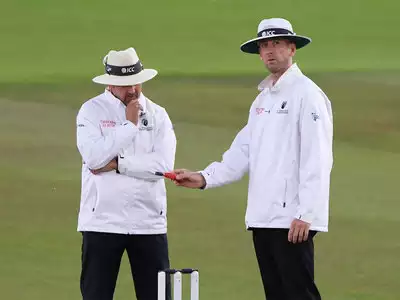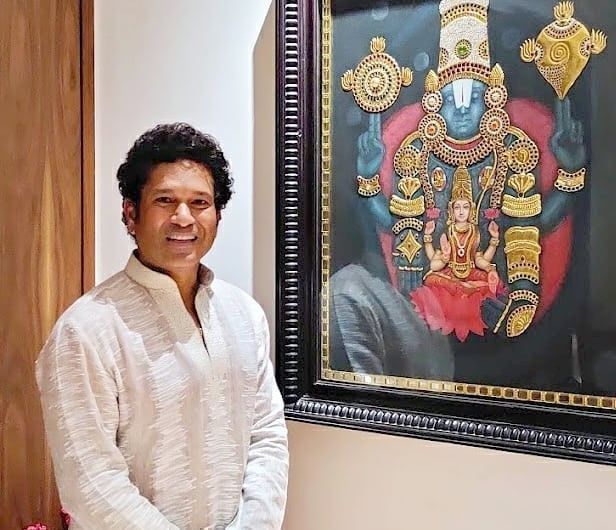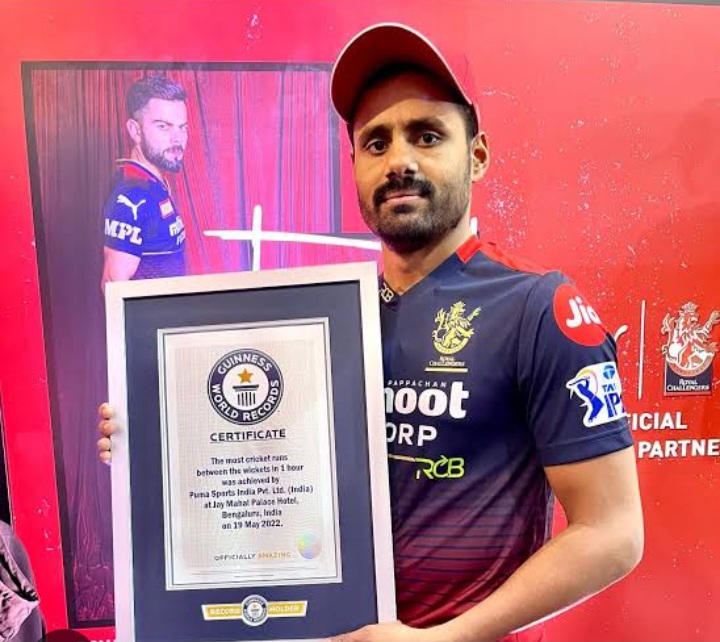Duties Of Leg Umpire In Cricket

In the intricate game of cricket, where every decision can sway the course of a match, the role of the umpire is paramount. While the on-field umpires are tasked with making crucial decisions, the leg umpire plays a vital supporting role, especially in matches where there are no technology-assisted reviews. The duties of the leg umpire are multifaceted and require a keen eye, sharp judgment, and a thorough understanding of the laws of the game.
First and foremost, the leg umpire assists the on-field umpire in officiating the match from the opposite end of the pitch. Positioned at square leg or point, the leg umpire closely observes the proceedings, focusing primarily on decisions relating to run-outs, stumpings, and no-balls. Their proximity to the action allows them to provide valuable input to the on-field umpire, especially in cases where the latter’s view may be obstructed.
During the game, the leg umpire is responsible for signaling no-balls, byes, leg-byes, and wides, thereby ensuring fair play and adherence to the rules. This includes monitoring the bowler’s front foot for overstepping and promptly signaling any infringement to the on-field umpire. Additionally, the leg umpire assists in keeping track of the number of deliveries bowled in an over, helping to maintain the flow of the game.
In situations where there is doubt regarding the legality of a delivery, such as a potential front-foot no-ball or a contentious LBW appeal, the leg umpire provides valuable input to the on-field umpire, helping to arrive at the correct decision. Their role is not limited to adjudicating on-field incidents but also extends to maintaining decorum and discipline on the field, ensuring that players conduct themselves in accordance with the spirit of the game.
Moreover, the leg umpire plays a crucial role in facilitating communication between the on-field umpires, players, and the match referee. They act as a conduit for conveying messages and instructions, thereby ensuring smooth coordination and resolution of any on-field disputes or disciplinary issues.
In summary, the duties of the leg umpire in cricket are diverse and demanding, requiring a combination of vigilance, decisiveness, and integrity. From officiating run-out decisions to signaling no-balls and maintaining discipline on the field, the leg umpire’s contribution is invaluable in upholding the integrity and fairness of the game. Their role may often go unnoticed amidst the on-field action, but their presence is indispensable in ensuring that the game of cricket is played in accordance with the highest standards of sportsmanship and fairness.
Essential Duties of a Leg Umpire in Cricket

Cricket, often described as a gentleman’s game, is renowned for its intricacies and rules that govern every aspect of play. Among the key figures ensuring fair play are the umpires, who serve as the arbiters of the game. Within this cadre of officials, the leg umpire holds a crucial position, responsible for various duties that contribute to the smooth conduct of the match. Let’s delve into the essential responsibilities of a leg umpire in cricket.
1. Decision Making:
One of the primary roles of a leg umpire is to make decisions regarding dismissals and other game-related matters. This includes judging LBW (Leg Before Wicket) appeals, which require astute observation and knowledge of the rules. Leg umpires must assess whether the ball would have hit the stumps if not intercepted by the batsman’s pads, considering factors such as line, impact, and bounce.
2. Monitoring No-Balls:
Leg umpires are tasked with monitoring the bowler’s front foot to ensure that it does not overstep the popping crease while delivering the ball. This is crucial as a no-ball results in a penalty for the fielding team, often providing the batting side with an additional run or an extra delivery. Maintaining vigilance over the bowler’s foot placement requires constant attention throughout the match.
3. Assisting the On-Field Umpire:
In cricket, there are typically two on-field umpires, positioned at either end of the pitch. The leg umpire collaborates closely with the on-field umpire, offering support and assistance when necessary. This may involve consulting on contentious decisions, confirming the legality of a delivery, or providing input on run-out and stumping appeals.
4. Field Management:
While the primary focus of the leg umpire is on decision-making and monitoring the bowler’s actions, they also play a role in managing the playing area. This includes signaling boundaries, sixes, and other scoring events, as well as ensuring that the fielding team maintains the requisite number of players within the fielding restrictions.
5. Communication with Players and Officials:
Effective communication is essential for the smooth functioning of the game. Leg umpires must interact with players and team officials courteously, conveying decisions clearly and addressing any concerns raised during the match. They also communicate with scorers to ensure accurate recording of runs, wickets, and other statistical data.
6. Continuous Learning and Adherence to Regulations:
Cricket is a dynamic sport, with rules and regulations subject to periodic revisions and updates. Leg umpires must stay abreast of these changes, continuously enhancing their understanding of the game. This involves attending training sessions, workshops, and seminars conducted by cricket boards and officiating bodies to maintain high standards of officiating.
7. Maintaining Professionalism and Integrity:
Upholding the spirit of the game and demonstrating integrity are paramount for leg umpires. They must remain impartial and unbiased in their decision-making, irrespective of external pressures or the significance of the match. Adhering to ethical standards fosters trust among players, officials, and spectators, preserving the integrity of cricket.
In conclusion, the role of a leg umpire in cricket is multifaceted, requiring a blend of technical expertise, situational awareness, and interpersonal skills. By diligently performing their duties, leg umpires contribute to the fair and orderly conduct of matches, enriching the experience for players and fans alike. Their pivotal role underscores the importance of officiating in upholding the spirit of cricket as a sport renowned for its tradition and sportsmanship.
Top Leg Umpires Who Left Their Mark on Cricket
In the dynamic world of cricket, where split-second decisions can sway the course of a match, umpiring stands as a pillar of integrity and fairness. Among the esteemed cadre of umpires, leg umpires play a crucial role in adjudicating key moments of the game. Over the years, several individuals have distinguished themselves in this position, earning recognition for their exceptional skills and unwavering dedication. Let’s explore some of the top leg umpires who have made indelible contributions to the sport.
Dickie Bird:

Renowned for his distinctive mannerisms and impeccable judgment, Dickie Bird is hailed as one of the finest umpires in cricket history. Serving as a leg umpire in numerous high-profile matches, including Test matches and World Cup finals, Bird earned widespread respect for his calm demeanor and astute decision-making. His remarkable career spanned over two decades, during which he became synonymous with integrity and professionalism on the field.
Simon Taufel:

Widely regarded as one of the most accomplished umpires of the modern era, Simon Taufel made significant strides as a leg umpire before transitioning to the role of an on-field umpire. Known for his sharp eye and unwavering composure, Taufel officiated in multiple ICC events, showcasing exceptional judgment and clarity in his decisions. His meticulous approach to umpiring set new benchmarks for professionalism and excellence, earning him admiration from players and peers alike.
Steve Bucknor:

A name synonymous with authority and expertise, Steve Bucknor etched his name in cricketing lore with his distinguished tenure as a leg umpire. Renowned for his meticulous attention to detail and sound judgment, Bucknor officiated in a plethora of high-profile matches, including Ashes series and ICC Champions Trophy finals. His commanding presence on the field and unwavering commitment to fairness cemented his reputation as one of the premier leg umpires in cricket history.
Rudi Koertzen

South African umpire Rudi Koertzen left an indelible mark on the game with his exemplary service as a leg umpire. Known for his authoritative yet genial demeanor, Koertzen presided over numerous iconic moments in cricket, exhibiting remarkable consistency and clarity in his decisions. His tenure as an umpire spanned over two decades, during which he earned admiration for his professionalism and integrity, making him a revered figure in the cricketing fraternity.
In conclusion, the role of leg umpires in cricket cannot be overstated, as they stand at the forefront of upholding the integrity and spirit of the game. Through their exemplary skills, unwavering integrity, and dedication to fairness, the aforementioned umpires have left an indelible imprint on cricketing history, serving as beacons of excellence for future generations of umpires to emulate. Their contributions underscore the pivotal role of umpiring in ensuring the sanctity and competitiveness of cricket as a sport cherished by millions around the globe.
FAQs




